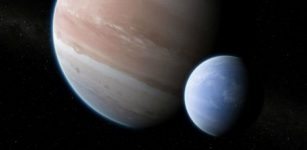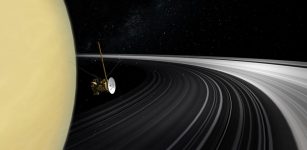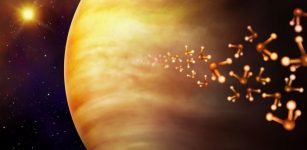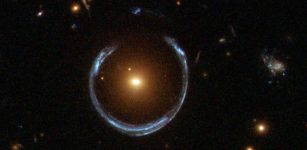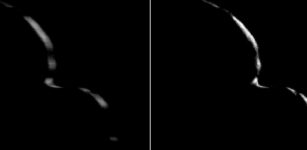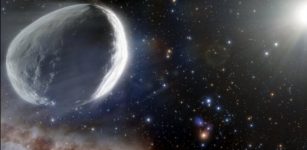Two Exoplanets In The Constellation Lyra May Be Mostly Water, NASA’s Hubble And Spitzer Find
Eddie Gonzales Jr. – MessageToEagle.com – A team led by researchers at the University of Montreal has found evidence that two exoplanets orbiting a red dwarf star are “water worlds,” where water makes up a large fraction of the entire planet.
These worlds, located in a planetary system 218 light-years away in the constellation Lyra, are unlike any planet found in our solar system.
The team, led by Caroline Piaulet of the Trottier Institute for Research on Exoplanets at the University of Montreal, published a detailed study of this planetary system, known as Kepler-138, in the journal Nature Astronomy today.
Piaulet and colleagues observed exoplanets Kepler-138 c and Kepler-138 d with NASA’s Hubble and the retired Spitzer space telescopes and discovered that the planets could be composed largely of water. These two planets and a smaller planetary companion closer to the star, Kepler-138 b, had been discovered previously by NASA’s Kepler Space Telescope. The new study found evidence for a fourth planet, too.
Water wasn’t directly detected at Kepler-138 c and d, but by comparing the sizes and masses of the planets to models, astronomers conclude that a significant fraction of their volume – up to half of it – should be made of materials that are lighter than rock but heavier than hydrogen or helium (which constitute the bulk of gas giant planets like Jupiter). The most common of these candidate materials is water.
With volumes more than three times that of Earth and masses twice as big, planets c and d have much lower densities than Earth. This is surprising because most of the planets just slightly bigger than Earth that have been studied in detail so far all seemed to be rocky worlds like ours. The closest comparison, say researchers, would be some of the icy moons in the outer solar system that are also largely composed of water surrounding a rocky core.
“Imagine larger versions of Europa or Enceladus, the water-rich moons orbiting Jupiter and Saturn, but brought much closer to their star,” explained Piaulet. “Instead of an icy surface, they would harbor large water-vapor envelopes.”
Researchers caution the planets may not have oceans like those on Earth directly at the planet’s surface. “The temperature in Kepler-138 d’s atmosphere is likely above the boiling point of water, and we expect a thick dense atmosphere made of steam on this planet. Only under that steam atmosphere there could potentially be liquid water at high pressure, or even water in another phase that occurs at high pressures, called a supercritical fluid,” Piaulet said.
In 2014, data from NASA’s Kepler Space Telescope allowed astronomers to announce the detection of three planets orbiting Kepler-138. This was based on a measurable dip in starlight as the planet momentarily passed in front of their star.
Benneke and his colleague Diana Dragomir, from the University of New Mexico, came up with the idea of re-observing the planetary system with the Hubble and Spitzer space telescopes between 2014 and 2016 to catch more transits of Kepler-138 d, the third planet in the system, in order to study its atmosphere.
A new exoplanet in the system
The two possible water worlds, Kepler-138 c and d, are not located in the habitable zone, the area around a star where temperatures would allow liquid water on the surface of a rocky planet. But in the Hubble and Spitzer data, researchers additionally found evidence for a new planet in the system, Kepler-138 e, in the habitable zone.
This newly found planet is small and farther from its star than the three others, taking 38 days to complete an orbit. The nature of this additional planet, however, remains an open question because it does not seem to transit its host star. Observing the exoplanet’s transit would have allowed astronomers to determine its size.
With Kepler-138 e now in the picture, the masses of the previously known planets were measured again via the transit timing-variation method, which consists of tracking small variations in the precise moments of the planets’ transits in front of their star caused by the gravitational pull of other nearby planets.
The researchers had another surprise: they found that the two water worlds Kepler-138 c and d are “twin” planets, with virtually the same size and mass, while they were previously thought to be drastically different. The closer-in planet, Kepler-138 b, on the other hand, is confirmed to be a small Mars-mass planet, one of the smallest exoplanets known to date.
“As our instruments and techniques become sensitive enough to find and study planets that are farther from their stars, we might start finding a lot more of these water worlds,” Benneke concluded.
Press release from NASA


